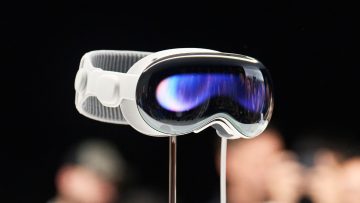Apple introduced its own Always-on display functionality for the iPhone in 2022, a feature Android phones had for years. But the Always-on display feature in iOS 16 works only on the iPhone 14 Pro and Pro Max to prevent battery drain on the entry-level models.
I’ve explained more than once that Always-on display functionality is overkill on the iPhone, considering how fast you unlock it to access notifications. And that you should disable the feature the first chance you get to improve battery life, even though battery life on iPhone 14 Pro is nothing short of spectacular. Going forward, Apple will show exactly how much energy the Always-on display consumes on iPhone 14 Pro. But you’ll need Apple’s upcoming iOS 16.4 update to see the new stats.
The Pro models have displays that support ProMotion, which is Apple’s marketing term for a dynamic refresh rate that goes from 1Hz to 120Hz. The iPhone 14 and 14 Plus have a fixed 60Hz refresh rate. As a result, the Always-on display functionality would consume too much energy on the 14 and 14 Plus.
Unlike Android handsets, the iPhone’s Face ID lets you unlock the screen really fast. If you pick up the phone, the screen turns on, you see the notifications, and you’re already unlocked by the time all of that happens. That’s how fast it is. And that’s why I’ve always thought that Always-on display functionality isn’t needed.
What’s the point of seeing a dimly lit iPhone display if getting to the notifications is such a fast experience? Not to mention that the dim screen might fool you into thinking you’ve just received a new notification and make you pick it up. Last but not least, anyone with an Apple Watch has no use at all for an Always-on iPhone display.
Disabling the Always-on display functionality is quite easy to do. Head to the Settings app, choose the Display & Brightness menu and then look for the Always On Display section.
Once the iOS 16.4 update is out, you’ll see exactly how much energy the Always-on display feature consumes on your iPhone. 9to5Mac found code in the iOS 16.4 beta that indicates the feature is in the works. The Battery menu will show a new category specific to the Always-on display once the update arrives.
Presumably, the feature will appear in the iOS 16.4 beta before the final release comes out. But it’s unclear whether the current beta will show you how much power the iPhone 14 Pro uses for the Always-on display.
Regardless of that, you can always test the power consumption for yourself. Measure battery life for 24 hours with the Always-on display turned on. Then turn it off and repeat the process. If you see meaningful differences, you won’t have to wait for iOS 16.4 to confirm your worries. You can turn off the Always-on display functionality right away.







